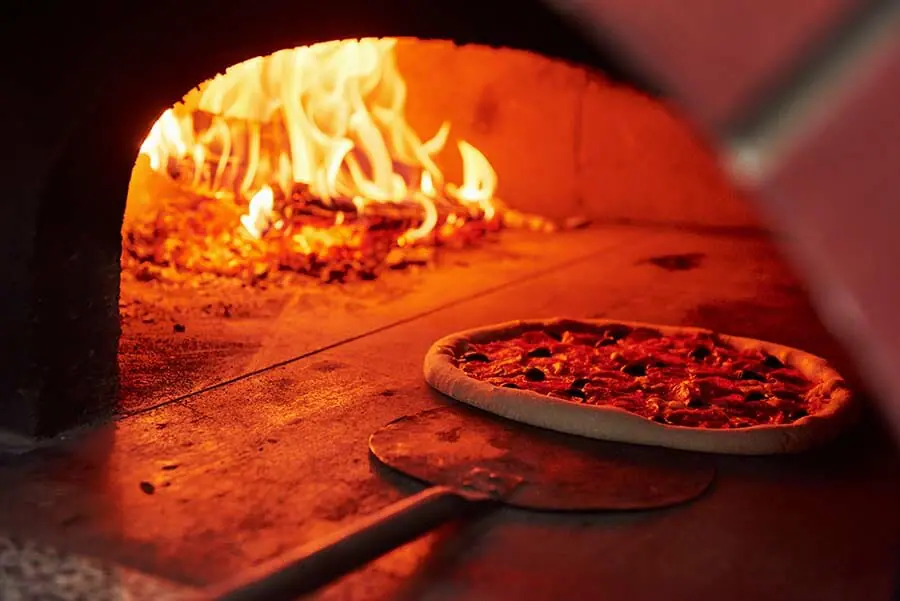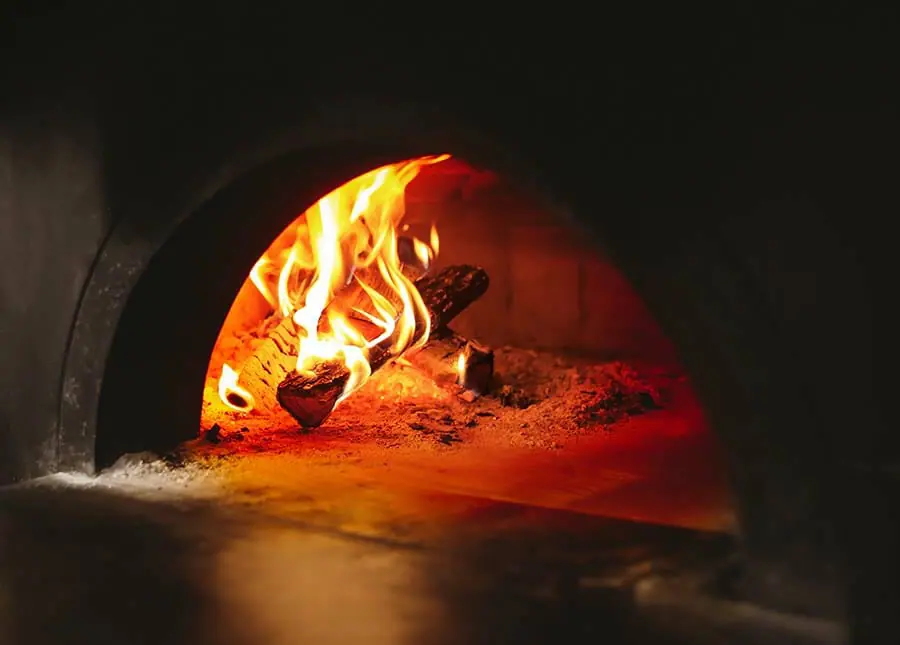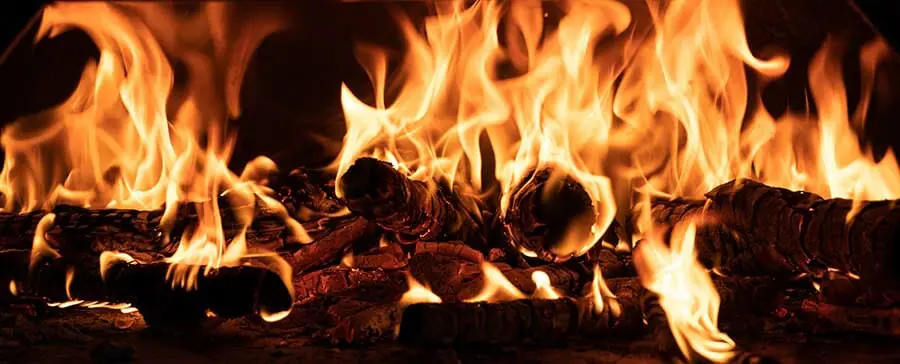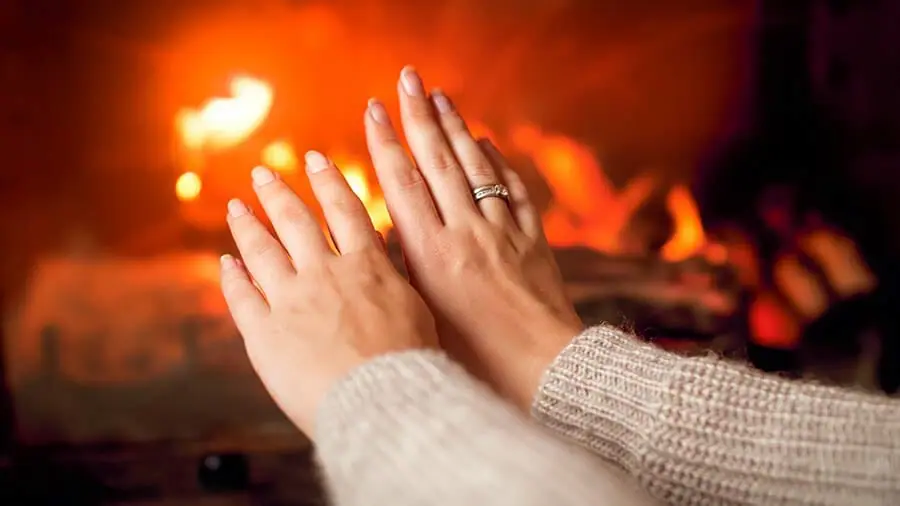- Secondary burn is a common element that’s included in the majority of modern wood-burning stoves (check out the best wood burning stoves here)
- Secondary burn functions by burning off the smoke initially produced from the fire that otherwise would have gone up the chimney
- It’s frequently referred to as a “clean burning stove”, “clean burn”, or “tertiary air”, all of which basically means a decrease in emissions and an overall increased efficiency
- If you own a wood stove, improving its efficiency is critical, especially if you are using the stove as your primary source of heat
- Increasing the efficiency means you are getting more heat from your stove over a prolonged period of time compared to similarly sized stoves
- You can see what it looks like here:
There are many parts that make up a wood stove.
They may have the heat of a secondary burn or combustion on this stove. There is some more information about this wood burning stove. There is more information about these parts in a wood burning stove.
Contents
What is secondary burn?
A secondary burn also goes by the name secondary combustion. This will allow the heat output to work while the wood is burning. It will also help the stove run more efficiently. The stove will be able to put out more heat and the unit will not have to work as hard.
This unit is can also help prevent the glass on the stove doors from turning black. It is also to reduce the emissions and soot from the wood burning. The gasses will burn off waste higher up in the stove.
This will allow the stove to produce more heat and reduce emissions. To assist the secondary burn a second feed for air is needed in the wood stove firebox.
(Learn more about whether wood stoves are air tight)
This secondary burn in the wood stove will allow the stove to put out more heat than a stove that does not have this. Most newer models of wood burning stoves come standard with the secondary burn.
Burning the wood will produce carbon dioxide and the fire will use a lot of energy to work especially if the wood has some moisture in it. Around 60 percent of the heat is made from the secondary burn.
The secondary combustion uses the waste gases and will allow fresh air to reach the higher stove firebox and will allow it to go above the frame.
There are usually smaller holes on the back of the unit. They are located on the top of the firebox in the wood burning stove. This will allow additional air to get into the firebox and it will allow secondary combustion.
Fresh Air
The combustion needs fresh air to work properly. The fresh air will enter the unit above the area of the flames. This will allow the temperature of the fire to become higher.
This will help release gases and will allow more heat to be produced. This process will produce additional heat and will be hotter than the wood burning by itself.
The secondary burn will begin when the stove gets hot and the temperatures get high. To help this process the primary and the secondary air vents can be adjusted. This will allow a person to control the amount of air that the fire is getting.
This will allow them to control how much heat the fire is going to produce. The hotter the fire gets the less wood that a person will need to use and their supply of wood can last longer.
Burning Efficiency

The efficiency of the wood stove will determine how much energy is used while the fire is burning and how much heat is produced.
The higher the efficiency of the stove the more heat it will be able to produce.
The secondary burn will allow the stove to have a burning efficiency rate of at least 80 percent.
If there is no secondary burn then the efficiency of the wood burning stove is as little as 20 percent. This is less heat that is produced and more wood that is wasted.
Learn more about what to put behind a wood burning stove and whether you can put coal in a wood burning stove.
Less Waste

Secondary combustion of the waste products from the fire will help reduce emissions that are due to burning.
This is important to keep the air in the home safe. A wood burning stove will keep smoke and waste in the firebox for a longer time.
This is due to the baffle plate that is near the flue pip. This can also increase the pressure in the firebox. When the pressure is increased and additional time is spent in the firebox the chance of secondary combustion is more likely to happen.
The baffle in the wood burning stove will help the heat go back into the firebox. This helps with the secondary burn.
More About Combustion

The temperate secondary combustions of the gases in this stove can easily reach temperatures of 1,100 degrees Fahrenheit. This is hotter than most people can imagine.
When the primary combustion happens the gases are released out of the wood but the temperatures do not allow the gas to burn.
The temperatures will reach up to 900 degrees which are still not enough for the secondary combustion to happen. (Learn more about flame temperatures here)
When secondary combustion happens the gases including carbon dioxide and methane are burnt.
Models of Stoves
Each wood burning stove will allow the proper amount of air in so that secondary combustion can happen. If there is not enough air this process cannot happen.
If there is too much air the fire will be too cool and this will not happen either.
You can learn more about types of fireplaces here.
Benefits of Secondary Burn

There are some benefits of having the secondary burn happen in the wood stove. The higher efficiency of the burn will allow more heat to be released from the wood that is burning.
There will be fewer emissions reduced and will allow the smoke to be used in controlled areas of the stove. This process will also reduce the chance of the stove doors turning black from use. It is not uncommon for the wood burning doors to become black and unsightly and this will help stop the process.
This process also reduces the creosote buildup in the chimney or the flue of the unit. This will help the unit stay clean and an annual service should be enough to keep things working properly. A person should check the efficiency rating on the wood burning stove.
The higher the rating is this is a sign that the wood burning stove uses secondary combustion.
The secondary burn will allow a person to get increased heat out of their wood burning stove. They should make sure their model stove can do this process so they can enjoy more heat and help stay warm in the cooler months.
Make sure you understand over firing and wood stoves– it’s an important safety concern!

